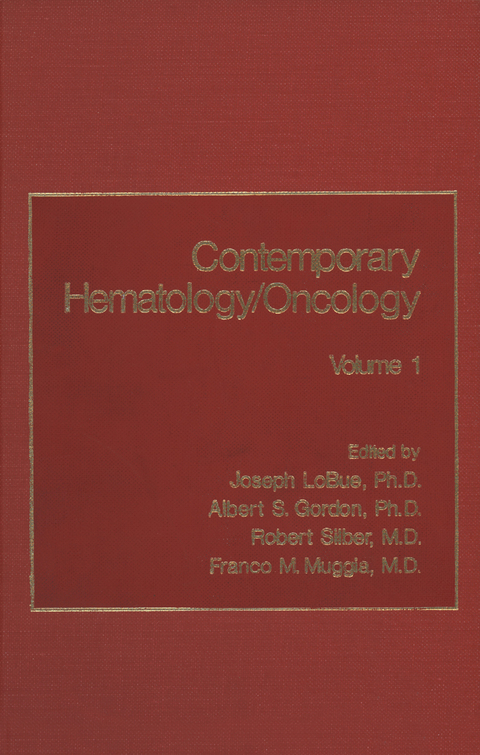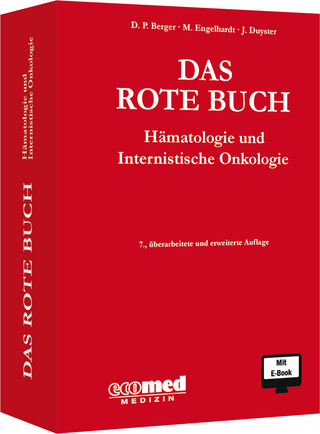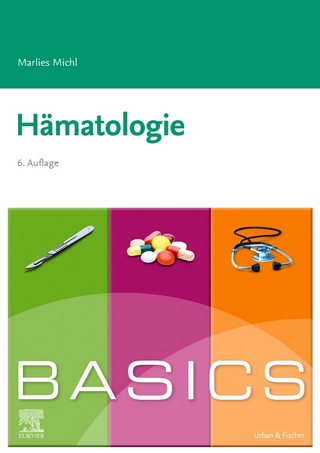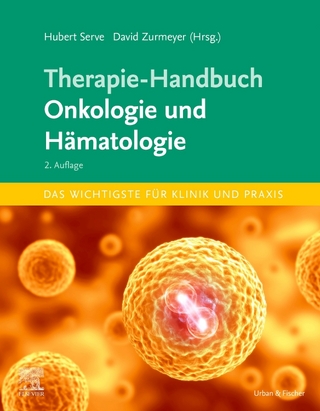
Contemporary Hematology/Oncology
Springer-Verlag New York Inc.
978-1-4684-3577-1 (ISBN)
The continuous advances in our understanding of hematology and neo plastic disorders have made possible this third volume of reviews. Their purpose is to summarize investigations which have defined new concepts, and, it is hoped, stimulate new ideas. In the choice of subjects, we have attempted to retain the balance between academic and clinical interests. We are grateful to the contributors, who have maintained the high stan dards set in the earlier volumes, and for feedback from readers. Both have helped to orient the direction of this series. It was a reader who pointed out that the title of the two earlier volumes, The Year in Hematol ogy, was misleading since it suggested a detailed review of trends and findings limited to the last year. In response to this valid comment, The Year . . . has been changed to Contemporary . . . and the scope has been expanded to encompass the kindred disciplines of hematology and oncol ogy. Another editor, Franco M. Muggia, has been added to provide addi tional expertise for the latter field. The title of the present and future volumes has been changed to Contemporary Hematology/Oncology. It has been pointed out to us that considerable ingenuity will be needed to find topics not already covered. We believe that the papers in the present volume have met this challenge. As before, the readers' comments con cerning Contemporary Hematology/Oncology will be appreciated. Joseph LoBue Albert S. Gordon Robert Silber Franco M.
1 Clonal and Stem Cell Origin of Blood Cell Neoplams.- 1.1. Introduction.- 1.2. Mosaic Systems.- 1.3. Myeloproliferative Disorders.- 1.4. Miscellaneous Myeloid Cell Disorders.- 1.5. Blood Cell Lymphoproliferative Neoplasms.- 1.6. Lymphoma.- 1.7. Acute Leukemia.- 1.8. Summary and Concluding Remarks.- References.- 2 Interactions of Vessel Wall with Formed Blood Elements.- 2.1. Introduction.- 2.2. Thrombus Formation within the Blood Vessel.- 2.3. The Blood Vessel.- 2.4. Thrombosis on the Subendothelium.- 2.5. Endothelial Damage.- 2.6. The Platelet Response.- 2.7. Vascular Response to the Hemostatic Mechanism.- 2.8. Hypercoagulability and Atherogenesis.- 2.9. The Endothelium and Atherogenesis.- 2.10. Control of the Lesion.- 2.11. Summary.- References.- 3 The Effect of Heparin upon Complement Activation.- 3.1. Introduction.- 3.2. Heparin as a Complement Inhibitor.- 3.3. Clinical Implications.- 3.4. Summary.- References.- 4 The Molecular Genetics of Thalassemia.- 4.1. Introduction.- 4.2. The Thalassemias: The Range of Potential Molecular Defects.- 4.3. Globin Gene Expression.- 4.4. The Organization of Eukaryotic Genes.- 4.5. The Organization of Globin Genes in Human DNA.- 4.6. Molecular Defects in Thalassemia Syndromes.- 4.7. Conclusions and Future Prospects.- References.- 5 Blood Group Alterations in Cancer.- 5.1. Introduction.- 5.2. Blood Groups: An Overview.- 5.3. Serologic Studies of Blood Groups in Malignancy.- 5.4. Immunologic Effects of Tumor-Associated Blood Group Alterations.- 5.5. Studies of Cellular Blood Group Structure and Biosynthesis in Malignancy.- 5.6. Studies of Blood Groups on Cultured Transformed Cells and Cell-Cell Hybrids: Structure-Function Relationships.- 5.7. Discussion.- 5.8. Summary.- References.- 6 Rational Approach to Granulocyte Transfusion Therapy.- 6.1. Introduction.- 6.2. Granulocyte Collection.- 6.3. Therapeutic Granulocyte Transfusion.- 6.4. Histocompatibility Testing.- 6.5. Prophylactic Granulocyte Transfusion.- 6.6. Future Research Methodology.- References.- 7 Mechanisms and Functions of Capping in Lymphocytes.- 7.1. Introduction.- 7.2. Surface Immunoglobulin on B Cells.- 7.3. Kinetics and Pharmacology of sIg Capping.- 7.4. Capping and Cell Motility.- 7.5. Events after Capping.- 7.6. Capping of Other Molecules and Cells.- 7.7. Capping and Membrane Structure: The Fluid Mosaic Model.- 7.8. Capping and the Immune Response.- 7.9. Capping Induced by Antigen.- 7.10. Capping and Chemotaxis.- 7.11. Abnormalities of Capping and Motility.- References.- 8 Amyloidosis.- 8.1. Introduction.- 8.2. Pathology.- 8.3. Biochemistry of Amyloid.- 8.4. Pathogenesis.- 8.5. Clinical Aspects.- 8.5.1. Diagnosis.- 8.5.2. General Clinical Manifestations.- 8.5.3. Prognosis.- 8.5.4. Treatment.- References.- 9 The Significance of Terminal Transferase in Normal and Neoplastic Hematopoietic Cells.- 9.1. Introduction.- 9.2. Original Discovery and Biochemistry of TdT.- 9.3. Discovery of TdT in Human Leukemia Cells.- 9.4. Procedures for the Assay of TdT.- 9.5. Characteristics of TdT-Positive Human Leukemias.- 9.6. Significance of TdT in Leukemia Cells.- 9.7. TdT in Leukemia-in-Remission.- 9.8. TdT in Malignant Lymphomas.- 9.9. TdT in Murine Leukemias.- 9.10. Anatomy and Physiology of Normally Occurring TdT-Positive Cells.- References.- 10 Kinin-Releasing Mechanisms in Hemostasis.- 10.1. Introduction.- 10.2. Kinin Release.- 10.3. Surface-Initiated Blood Clotting.- 10.4. Kinin-Releasing Mechanisms and Blood Clotting.- 10.5. The Clot-Promoting Actions of Kinin-Releasing Substances.- 10.6. Prekallikrein: Fletcher Factor.- 10.7. Kininogens and Clotting.- 10.8. Nature of Plasma Kininogens.- 10.9. High-Molecular-Weight Kininogen and Hageman-Factor-Dependent Reactions.- 10.10. What Is Activated Hageman Factor?.- 10.11. Bovine High-Molecular-Weight Kininogen.- 10.12. Kinin-Releasing Mechanisms and Fibrinolysis.- 10.13. The Role of Kinin-Releasing Mechanisms in Collaborative Actions between Intrinsic and Extrinsic Clotting Mechanisms.- 10.14. Concluding Remarks.- References.
| Zusatzinfo | 32 Illustrations, black and white; XVI, 330 p. 32 illus. |
|---|---|
| Verlagsort | New York, NY |
| Sprache | englisch |
| Maße | 152 x 229 mm |
| Themenwelt | Medizinische Fachgebiete ► Innere Medizin ► Hämatologie |
| ISBN-10 | 1-4684-3577-9 / 1468435779 |
| ISBN-13 | 978-1-4684-3577-1 / 9781468435771 |
| Zustand | Neuware |
| Haben Sie eine Frage zum Produkt? |
aus dem Bereich


